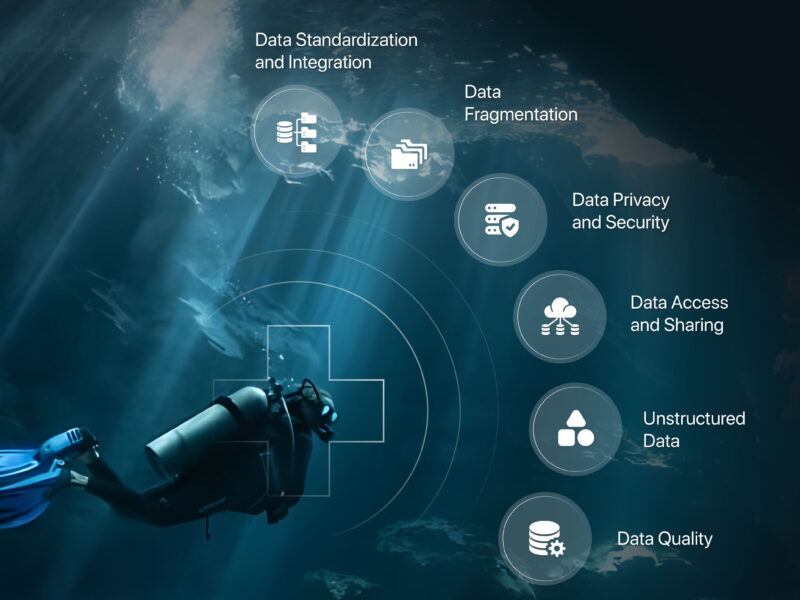Today’s healthcare environment is overwhelmed with data, internal data from EHRs and legacy systems, external patient data generated by IoT and Wearables, and third-party data from disparate sources that manage receivables, approvals, vendors, and so much more. Besides, as the patient moves through various health ecosystems, his data is captured in a format tied to a particular system, thus preventing a holistic approach to his care that is agnostic of the source.
As wearables become more of a staple in healthcare, healthcare organizations will have to integrate various devices, apps, and tools, generating data in disparate formats. And as patients become more empowered, they will demand access to their patient data, including data from various sources, including prescriptions, lab results, and medical history that will allow them to better care for themselves without traveling to a doctor’s office to get necessary medical information. Health insurance companies need a constant flow of data to develop appropriate coverage plans, attract members, and ensure a quality member experience. They need to communicate with providers for timely approvals, accurate billing info, and population
health trends to provide they can proactively manage the member populations, drive wellness, and preventative initiatives to create efficiencies and cost-effective coverage options.
APIs and Microservices create the bridges between these systems to keep the intelligence flowing.
API ROADMAP AND STRATEGY
Using Scalable Health API strategy services, enterprises can automate specific processes and drive efficiencies, make strategic business decisions that were not possible in the past.
- Facilitate communications between payers, care providers, and patients by adopting an FHIR-based data platform with shared access across the care network.
- Implement seamless care coordination in a secure and HIPAA compliant manner.
- Supports bi-directional workflow interaction between third-party applications and EHRs with extensive, on-demand read-write capabilities.
- Drive digital Health Transformation initiatives by the adoption of common protocols and standards for health IT equipment, software, and services enabling compatibility between systems
MICROSERVICES FOR GREATER FLEXIBILITY
Microservices support agile development goals creating scalable, testable software delivered in short sprints of a few days to weeks allowing development teams to iterate and drives continuous improvement. Microservices are modules in nature, allowing for changes without disrupting the entire network. It will enable developers to focus on specific, targeted areas for the most significant impact. Each service can be independently deployed in scalable, dynamic environments making them simpler to update, faster error detection as they are isolated, and minimizes the risk of change.



